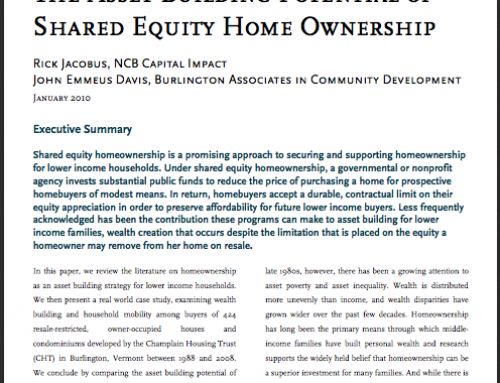Review of Is Inclusionary Zoning Inclusionary?, by Heather L. Schwartz, Liisa Ecola, Kristin J. Leuschner, Aaron Kofner. Rand Corporation, 2012.
Long time advocates of inclusionary housing (often known as “inclusionary zoning”) will be relieved to learn that a new report from the Rand Corporation confirms that the housing produced by these policies is in fact “inclusionary,” meaning it creates or preserves affordable housing in areas of low poverty. It is easy to imagine big headlines if the research had found the opposite, but it is nonetheless valuable to have hard data confirming that social programs are achieving their intended effects.
The Rand research team was led by Heather Schwartz, whose prior research on Montgomery County Maryland’s inclusionary housing compared the school performance of kids living in affordable housing in lower- and higher-poverty neighborhoods. In that study she found that low-income kids who moved to low-poverty schools were able to gradually catch up academically with their middle income peers while kids with stable affordable housing who stayed in high-poverty schools didn’t—even though Montgomery County spends more per student to support the kids in higher poverty schools.
This new paper tackles the far less controversial question of whether homes that are produced by inclusionary policies are in fact located in low-poverty neighborhoods and/or near high-quality schools.
Across the United States the majority of affordable housing units have been built in neighborhoods with high-poverty rates, but the Rand researchers found 75 percent of units produced through some sort of inclusionary ordinance were located in low-poverty neighborhoods. This is a big contrast to the 8 to 34 percent for other types of affordable housing. They looked at data from 11 cities and 15,500 affordable housing units. The average inclusionary unit in the study was located in a neighborhood where only 7 percent of households lived in poverty (half the national average). Only 2.5 percent of inclusionary homes were located in high-poverty neighborhoods.
And as we would expect, access to higher income neighborhoods provided access to better schools. The inclusionary homes were located in the catchment areas of schools that had slightly lower poverty rates and slightly higher test scores than the other schools in these communities.
While some might assume that an inclusionary housing program by its very nature would be expected to produce these results, the variation among cities that the report documents is ample evidence that we can’t take these results for granted—much depends on the details of the design and implementation of these programs, and policy makers and advocates have to pay attention to the data to ensure that the programs are doing what they were supposed to do.
Unfortunately, this kind of data is shockingly hard to come by. The Rand researchers obviously had a difficult time compiling data on the location and characteristics of inclusionary homes, and they conclude that lack of funding for monitoring and collection of outcome data was “perhaps the greatest commonality among the 11 localities.” They rightly conclude that, given the value of the investment that goes into these homes, every inclusionary ordinance should create and fund some mechanism for ongoing data collection and evaluation.






